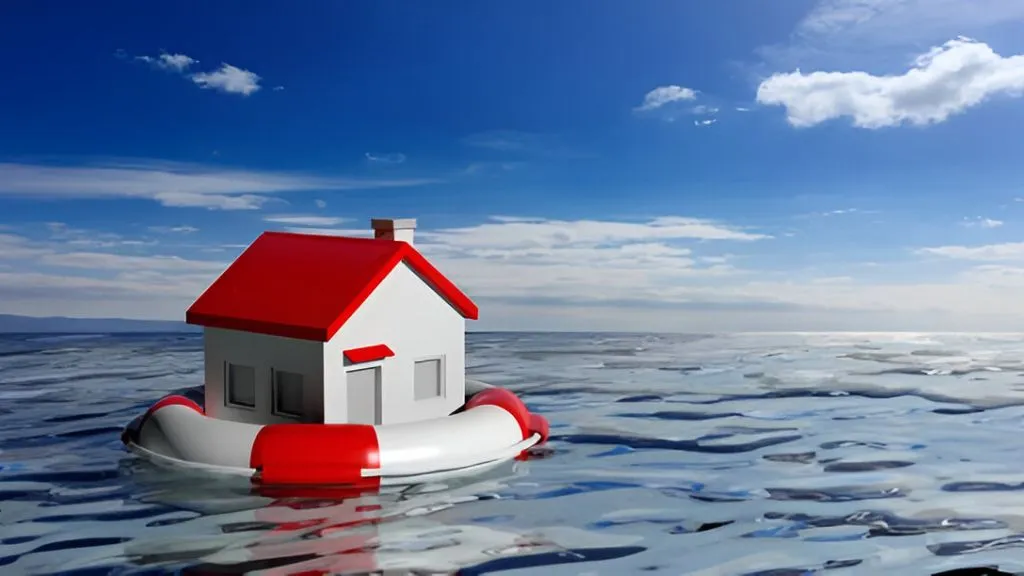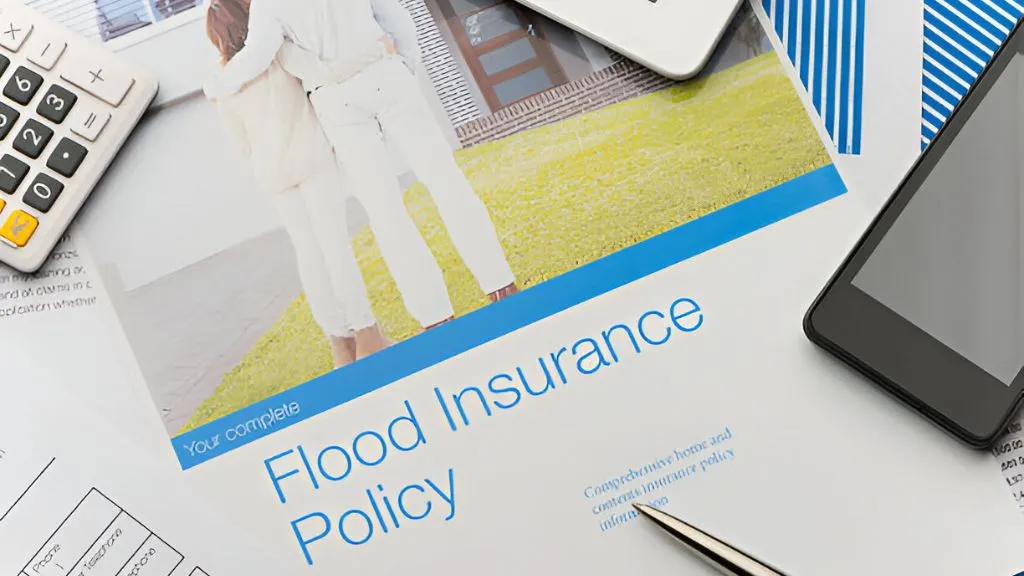
| Key Takeaways: 1. Flood Prevention Essentials: Learn practical tips on how to prevent floods in your home, including elevating electrical systems, installing flood barriers, and sealing cracks to keep water out. 2. Understanding Flood Risks: Understand different types of flooding, such as river, flash, coastal, and urban flooding, to better prepare your home against specific flood threats. 3. Preparation and Protection Strategies: Discover how to protect your house from flood damage by waterproofing your basement, raising utilities, and installing sump pumps and flood sensors. 4. Insurance and Emergency Planning: Ensure your flood insurance policy is up-to-date and create a comprehensive emergency plan to safeguard your family and property during flood events. 5. Actionable Steps During a Flood: Learn what immediate actions to take if a flood is imminent or occurring, including moving valuables, turning off utilities, and documenting damage for insurance claims. |
Types of Flooding: Understanding the Risks
Flooding can take many forms, each with its own set of risks. Common types include:
- River Flooding: River flooding occurs when prolonged or intense rainfall upstream causes rivers to overflow their banks. This type of flooding can cover extensive areas, affecting communities, farmland, and infrastructure along the river’s path. Factors such as snowmelt, ice jams, or heavy rains can exacerbate the situation, leading to significant damage to properties, roads, and bridges. River flooding is often gradual, allowing some time for preparation, but it can still result in devastating impacts if adequate precautions are not taken.
- Flash Flooding: Flash flooding is characterized by a rapid rise in water levels, typically occurring within minutes to hours of intense rainfall. This sudden and severe flooding often overwhelms drainage systems, causing swift inundation of streets, homes, and businesses. Flash floods can be triggered by heavy downpours, thunderstorms, or even dam breaks. Due to its rapid onset, flash flooding presents an immediate threat, making it crucial to be aware of weather warnings and to have a well-prepared emergency plan in place.
- Coastal Flooding: Coastal flooding is caused by storm surges, high tides, or hurricanes impacting coastal regions. These events push seawater onto land, leading to significant damage in areas close to the shore. Coastal flooding can be influenced by factors such as sea level rise, strong winds, and storm intensity. This type of flooding poses a threat to coastal communities, damaging homes, businesses, and infrastructure. Effective coastal flood prevention strategies include building seawalls, implementing improved drainage systems, and developing early warning systems to reduce the impact on vulnerable areas.
- Urban Flooding: Urban flooding occurs in cities and densely populated areas where inadequate drainage systems struggle to manage heavy rainfall. The combination of impervious surfaces like asphalt and concrete, coupled with poor drainage infrastructure, can lead to localized flooding in streets, basements, and properties. Urban flooding can disrupt daily life, damage property, and strain emergency services. Addressing urban flooding involves enhancing drainage systems, incorporating green infrastructure like rain gardens, and ensuring proper city planning to manage stormwater effectively.
Understanding these different types of flooding and their specific risks is essential in developing targeted prevention strategies and effective flood management plans. Knowing what kind of flooding might affect your area helps you prepare and take proactive measures to protect your home and community.
Safety Preparation to Prevent From Flood
Getting Ready for Unexpected Preparation is key to minimizing flood damage. Here’s how to get started:
- Elevate Electrical Systems: When it comes to flood prevention, elevating electrical systems is a game-changer. By raising your electrical panels, outlets, and appliances above potential flood levels, you not only shield them from water damage but also prevent dangerous electrical shorts and potential fires. Aim to place electrical components at least a foot above the base flood elevation. This proactive step in how to prevent floods ensures your utilities stay safe and operational, even when waters rise.
- Install Flood Barriers: Flood barriers are your frontline defence against water invasion. Sandbags, flood walls, and other barriers can keep the floodwaters at bay. Sandbags are budget-friendly but need proper placement and securing. For a more robust solution, consider permanent flood walls or barriers around key entry points like doors and windows. Regular checks and maintenance are crucial to ensure these barriers remain effective and reliable. It’s all about knowing how to protect the house from flood with these proactive measures.
- Create an Emergency Plan: Knowing how to prevent floods isn’t just about physical barriers—it’s also about preparedness. Craft a detailed emergency plan that outlines evacuation routes, family meeting points, and emergency contacts. Pack a supply kit with essentials like food, water, first-aid items, and flashlights. Regularly update your plan to reflect any changes in your household or local flood risks. With a solid emergency plan, you’ll be ready to act swiftly and safely, ensuring your family’s well-being during a flood.
How Do You Prevent Floods?
Effective flood prevention is about proactive measures and maintenance:
- Maintain Gutters and Drains: Keep your gutters and drains in tip-top shape to steer clear of flood trouble. Regular cleaning is crucial—remove leaves, debris, and blockages that can cause overflow and potential water damage. Ensure downspouts direct water well away from your home’s foundation. Investing a bit of time in gutter maintenance now can save you from costly repairs later. Remember, proper water flow is key to how to prevent floods and protect your home from unwanted water damage.
- Seal Cracks: Seal those cracks to keep floodwaters at bay! Regularly inspect your home’s foundation, walls, and windows for any gaps or damage. Use hydraulic cement for foundation cracks and caulking for windows and doors. Sealing cracks effectively stops water from sneaking in and causing damage. This prevention of flood method is a proactive way to protect the house from flood risks, ensuring your home stays dry and intact.
- Install Sump Pumps: A sump pump is your basement’s best friend in flood defence! Install it in the lowest part of your basement or crawl space to pump out any unwanted water. Regular maintenance is key—check it frequently and ensure it’s ready for action when heavy rains hit. Adding a battery backup ensures it keeps working even if the power goes out. This is an essential step in how to protect the house from flood and a smart way to handle it.
- Landscape Strategically: Your yard can be your flood-fighting ally with smart landscaping! Grade the land to direct water away from your home and install features like rain gardens or French drains. These tools absorb and channel water away, reducing the chance of flooding. Strategic landscaping is a powerful component of how to prevent floods and a great way to enhance your home’s defences. Proper yard management not only beautifies your space but also safeguards your home from water damage.
How to Protect Your House from Flood

Key Strategies Protecting your house from flood involves both structural and preventative measures:
- Waterproof Your Basement: Waterproofing your basement is a cornerstone of how to prevent floods. Apply high-quality sealants to walls and floors to block out moisture and prevent seepage. Consider installing a waterproof membrane or drainage system to further safeguard your basement from rising waters. This measure ensures that your lower levels stay dry and free from flood damage, making it a key part of the prevention of flood and an essential strategy for how to protect the house from flood.
- Raise Utilities: Elevating utilities is a smart move in how to protect the house from flood. Position your HVAC systems, water heaters, and other critical appliances above potential flood levels. This precaution helps prevent costly damage and keeps your utilities running smoothly, even during a flood. By raising these essential systems, you effectively reduce the risk of water-related malfunctions and ensure continuity of service when you need it most. It’s a proactive step in the broader strategy of how to prevent floods.
- Install Flood Sensors: Flood sensors are your early warning system for rising water levels. Place these sensors in key areas such as basements and near potential entry points. They’ll alert you to water intrusion before it becomes a major issue, allowing you to take swift action. Integrating flood sensors into your home’s flood prevention strategy enhances your ability to respond quickly and minimizes potential damage. It’s a smart, tech-savvy way to stay ahead in the prevention of flood.
- Insurance Policy: A robust flood insurance policy is a crucial component in how to protect the house from flood. Regularly review and update your house insurance coverage to ensure it includes protection against potential flood damage and sufficient coverage limits. Don’t wait for disaster to strike—proactive insurance management is key to a comprehensive flood prevention strategy. With the right policy, you’re not only safeguarding your property but also ensuring peace of mind against unexpected flood events.
How to Reduce Damage Caused by Flood to Your Home?
Taking Action If a flood is imminent or already occurring, quick actions can make a difference:
- Move Valuables: Relocating important documents, electronics, and cherished personal belongings to higher levels is a crucial step in how to protect the house from flood. Elevate these items to above potential flood levels to keep them safe from water damage. Use waterproof containers for extra security and ensure that all critical items are stored in a secure, elevated location. This proactive measure not only helps in protecting your most valued possessions but also plays a vital role in the broader strategy of how do you prevent floods.
- Turn Off Utilities: Shutting off gas, water, and electricity is a key action in how to prevent floods from causing additional hazards. By turning off these utilities, you prevent dangerous situations such as electrical shorts, gas leaks, and water damage. This precaution helps reduce the risk of fire and further structural damage during a flood. Make it part of your emergency plan, and ensure all household members know how to execute this step swiftly to enhance safety and minimize damage when a flood strikes.
- Document the Damage: Documenting the damage with photos and videos is essential for effective insurance claims and recovery. Capture detailed images of affected areas and belongings to provide clear evidence for your insurance provider. This step is crucial in the prevention of flood-related financial strain, ensuring that you have comprehensive documentation to support your claims. By accurately recording the extent of the damage, you facilitate a smoother and more efficient claims process, helping you recover quickly and effectively.
Make Sure of the Insurance Policy

Coverage Check An up-to-date flood insurance policy is crucial. Ensure your policy:
- Covers Flood Damage: Ensure your flood insurance policy provides comprehensive coverage for both structural damage and personal belongings. This means checking that your policy includes protection for not just the physical structure of your home but also for your valuables and essential items. The right coverage can make all the difference in how to protect the house from flood and mitigate financial losses. Flood damage can be extensive, and having a policy that fully covers these aspects is key to effective flood prevention and recovery. Review your policy regularly to ensure it meets your needs and offers complete peace of mind.
- Reflects Current Value: Update your flood insurance policy to accurately reflect recent renovations or improvements to your home. If you’ve made significant upgrades or changes, such as adding a new room or upgrading appliances, your policy should be adjusted to cover these enhancements. This ensures that in the event of a flood, the full value of your home and improvements are protected. Accurate coverage is a crucial part of how to prevent floods from leading to inadequate compensation. Keeping your policy current helps in preventing gaps in coverage and ensures that you’re fully safeguarded against potential flood damage.
Conclusion
Understanding how to prevent floods in your home is vital for safeguarding your property and ensuring peace of mind. By preparing in advance, implementing effective prevention measures, and having the right insurance coverage, you can protect your house from flood damage and reduce potential risks. Stay informed, stay prepared, and keep your home safe from the unpredictable forces of nature.






